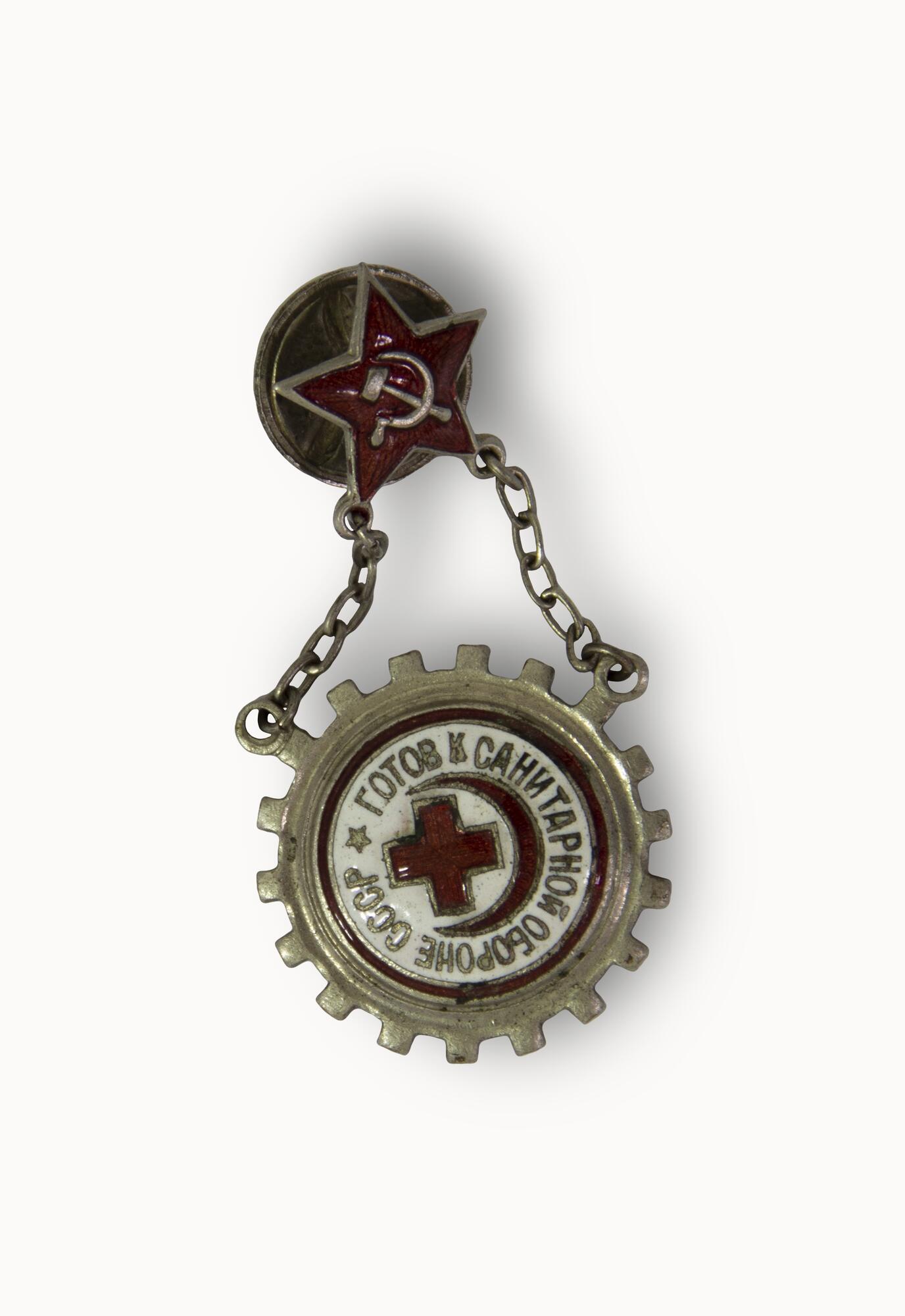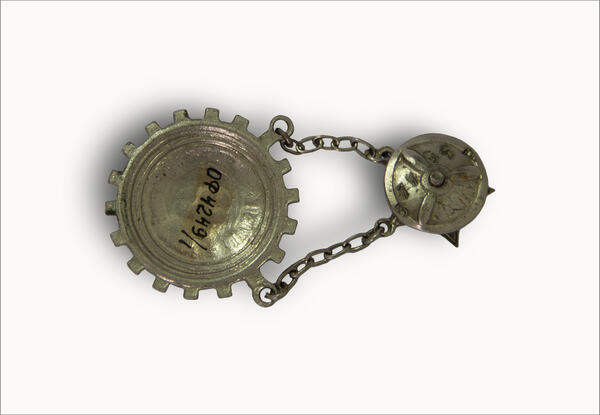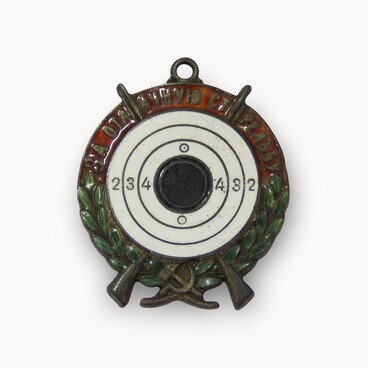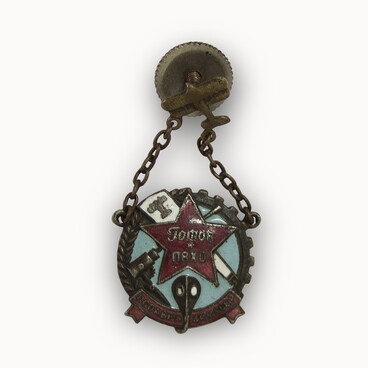The program of mass sanitary training of the population was implemented by the Union of the Red Cross and Red Crescent Societies of the USSR between 1934 and 1967. It included the knowledge of the rules of first aid, hygiene, sanitary and chemical defense.
After qualifying for the standards, Soviet citizens received a certificate and a badge “Ready for Sanitary Defense”. Voluntary aid posts and detachments were formed from among the activists of sanitary defense clubs. After 1967, a similar training program was implemented as part of the civil defense system.
The standards of military and sanitary knowledge for adults “Ready for Sanitary Defense of the USSR” were approved by the Executive Committee of the Union of the Red Cross and Red Crescent Societies of the USSR in 1934. The standards included requirements in the following areas: military sanitary defense, sanitary certificates for air defense, housing hygiene, food hygiene, personal hygiene, physical education, and red cross work.
The badge was made of tombac. It had a shape of a toothed gear with a diameter of 30 mm, in the center of which there were a red cross and a red crescent against a white background — the emblem of the Union of the Red Cross and Red Crescent Societies of the USSR. Along the circumference, there was the inscription that read, “Ready for Sanitary Defense of the USSR”. The badge was suspended on two chains and attached to a five-pointed star with a hammer and sickle. The badge was fixed with a pin.
In 1935, the Executive Committee of the Union of the Red Cross and Red Crescent Societies approved the regulations and standards of qualifying for the badge “Ready for Sanitary Defense of the USSR”, which included four sections: first aid and hygiene during hiking; air defense; school hygiene and sanitation; the organizational structure of the Red Cross and Red Crescent Societies. The badge was made of bronze and painted with hot enamel. It had a size of 22×22 mm.
The same year, the Executive Committee established the 2nd-class badge. It was awarded to those who passed stricter requirements. On a white flag above the gear, there was the number 2 with a red star inside. The badge was fixed with a screw. The production of 1st- and 2nd-class badges was stopped in June 1941 and resumed at the end of 1945 in the shape of a rhombus.
After qualifying for the standards, Soviet citizens received a certificate and a badge “Ready for Sanitary Defense”. Voluntary aid posts and detachments were formed from among the activists of sanitary defense clubs. After 1967, a similar training program was implemented as part of the civil defense system.
The standards of military and sanitary knowledge for adults “Ready for Sanitary Defense of the USSR” were approved by the Executive Committee of the Union of the Red Cross and Red Crescent Societies of the USSR in 1934. The standards included requirements in the following areas: military sanitary defense, sanitary certificates for air defense, housing hygiene, food hygiene, personal hygiene, physical education, and red cross work.
The badge was made of tombac. It had a shape of a toothed gear with a diameter of 30 mm, in the center of which there were a red cross and a red crescent against a white background — the emblem of the Union of the Red Cross and Red Crescent Societies of the USSR. Along the circumference, there was the inscription that read, “Ready for Sanitary Defense of the USSR”. The badge was suspended on two chains and attached to a five-pointed star with a hammer and sickle. The badge was fixed with a pin.
In 1935, the Executive Committee of the Union of the Red Cross and Red Crescent Societies approved the regulations and standards of qualifying for the badge “Ready for Sanitary Defense of the USSR”, which included four sections: first aid and hygiene during hiking; air defense; school hygiene and sanitation; the organizational structure of the Red Cross and Red Crescent Societies. The badge was made of bronze and painted with hot enamel. It had a size of 22×22 mm.
The same year, the Executive Committee established the 2nd-class badge. It was awarded to those who passed stricter requirements. On a white flag above the gear, there was the number 2 with a red star inside. The badge was fixed with a screw. The production of 1st- and 2nd-class badges was stopped in June 1941 and resumed at the end of 1945 in the shape of a rhombus.




